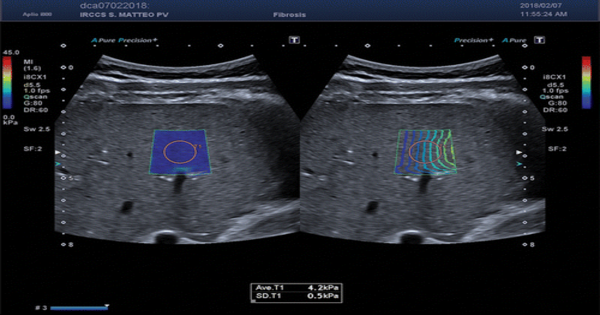Elastographyis a type of medical imaging that measures the mechanical properties of tissues. It provides data on the stiffness or elasticity of tissues, which can aid in the diagnosis of certain medical conditions. The most common reason for elastography is to check your liver for fibrosis, which occurs in the early stages and can progress to late-stage cirrhosis. If you have cirrhosis risk factors, signs, or symptoms, your provider may order elastography.
Any of group of medical imaging modalities that map the elastic properties and stiffness of soft tissue is referred to as elastography. The basic idea is that the hardness or softness of the tissue will provide diagnostic information about the presence or absence of disease. Cancerous tumors, for example, are often stiffer than surrounding tissue, and diseased livers are stiffer than healthy ones. The most common methods employ ultrasound or magnetic resonance imaging (MRI) to generate both the stiffness map and an anatomical image for comparison.
There are several types of elastography, including:
- Elastography ultrasound: Also known as transient elastography (FibroScan®), this noninvasive test creates an image of your organs using a handheld wand (transducer) and sound waves. The ultrasound is quick and painless.
- Shear wave elastography (SWE): This technique uses ultrasound waves to generate shear waves within the tissue. The speed of the shear waves is related to the stiffness of the tissue, allowing for the calculation of a shear modulus, which is a measure of tissue elasticity.
- Strain elastography: This technique uses ultrasound to measure the deformation of tissue in response to an applied force. The degree of deformation is related to the stiffness of the tissue.
- Magnetic resonance elastography (MRE): This technique uses magnetic resonance imaging (MRI) to generate images of the mechanical properties of tissues. It uses sound waves to create vibrations within the tissue, which are then imaged using MRI.
Elastography is used in a variety of medical applications, including the diagnosis of liver fibrosis, breast cancer, and thyroid nodules. It can also be used to monitor the response of tissues to treatment.
















